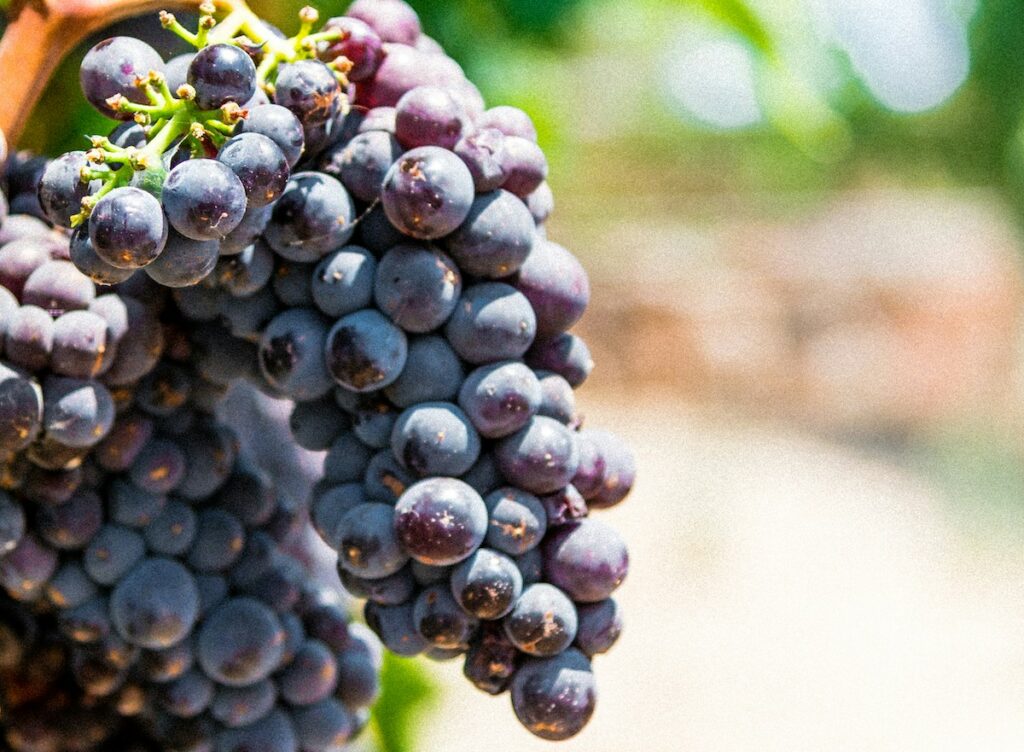A Guide to the Region’s Finest Selections

Sonoma County’s diverse terroir and microclimates create ideal conditions for a wide array of grape varietals, each contributing distinct characteristics to the wines they produce. The region’s wine reputation is anchored by its ability to grow both cool-climate varietals, favored by the fog and coastal breezes, as well as those that thrive under the warm sun further inland. Known primarily for its robust Pinot Noir, buttery Chardonnay, and complex Cabernet Sauvignon, Sonoma offers a wine for every palate.
However, the range of grape varietals planted in this part of California extends well beyond these well-known favorites. Merlot from Sonoma is praised for its soft tannins and smooth finish, while the old vine Zinfandel of the region is celebrated for its depth and concentration. The Italian and even rarer varietals attest to the historical influences and experimental spirit that thrive among Sonoma winemakers, making the area a treasure trove of viticultural possibilities.
The interplay between Sonoma’s geographic diversity and the expertise of its vintners has led to wines with exceptional breadth and complexity. As such, Sonoma is not just a destination for traditional wine enthusiasts but also a hub for those seeking to explore the nuanced spectrum of flavors offered by its expansive vineyard portfolio. Each grape varietal expresses a story of where and how it’s grown, inviting wine lovers to a unique tasting experience rooted in the very essence of Sonoma’s rich winemaking heritage.
Sonoma’s Wine Heritage
Sonoma County’s wine heritage reflects a rich tapestry of resilience and cultural infusion, from enduring Prohibition to the contributions of Italian immigrants, shaping the region into a world-renowned winemaking destination.
Historical Overview
Sonoma County’s viticultural history dates back to 1823 when the Spanish Franciscan missionaries planted the first wine grapes. The establishment of Buena Vista in 1857, California’s second oldest commercial winery, marked the onset of serious winemaking in Sonoma. By the end of the 19th century, Sonoma had become a significant player in the wine industry with over 250 wineries in operation.
Prohibition and Recovery
The advent of Prohibition in 1920 delivered a severe blow to the winemaking industry of Sonoma County, shuttering numerous wineries. However, a few like Buena Vista managed to survive by producing sacramental wine. Following Prohibition’s repeal in 1933, the region slowly regained its winemaking stature. Over time, experienced producers and new entrepreneurs alike played pivotal roles in reviving and expanding Sonoma’s vineyards and wineries.
Italian Immigrant Influence
Italian immigrants had a profound effect on Sonoma County’s wine culture. They brought with them diverse grape varietals and old-world winemaking practices. These settlers found the landscape reminiscent of their homeland, planting and nurturing vines throughout Sonoma. Their winegrowing methods intertwined with the region’s terroirs, enriching the diversity of its grapes and wines. The presence of wineries like Benziger Family Winery, founded by a family with deep roots in wine, attests to the lasting influence of Italian heritage in Sonoma’s wine identity.
Geography and Climate Factors
Sonoma County’s grape varietals thrive due to the region’s diverse climate and geographical features. The climate varies from the cool, foggy regions near San Pablo Bay to the warmer inland valleys, directly impacting viticulture.
The Impact of Climate on Grape Growing
The climate in Sonoma County is pivotal to grape growing, with coastal areas influenced by cool, foggy conditions that are ideal for Pinot Noir and Chardonnay, particularly in Los Carneros and the Russian River Valley. In contrast, the inland valleys like Alexander Valley experience hotter temperatures that ripen Cabernet Sauvignon to perfection.
Geographical Diversity and AVAs
Sonoma is marked by geographical diversity, with over 19 American Viticultural Areas (AVAs) each with unique soil and topography. The Sonoma Mountain AVA, for instance, provides excellent drainage and a variety of soil types, contributing to the complexity of the wines produced. The diversity within these AVAs showcases Sonoma’s ability to cultivate a wide range of grape varietals.
Sonoma’s Unique Terroirs
Terroir is a French term that encapsulates the climate, soil, and landscape’s effect on a vine’s character. Key areas in Sonoma, such as Bennett Valley and Dry Creek Valley, present unique terroir due to their microclimates and soil composition. The Petaluma Gap channels cool ocean breezes, markedly influencing the final profile of the grapes grown there. Each terroir in Sonoma contributes to the distinct flavors and aromas found in the region’s esteemed wines.
The Varietals of Sonoma
Sonoma County’s diverse terroir supports a broad range of grape varieties, making it a dynamic region for wine production. The varietals are carefully cultivated in microclimates suited to their needs, contributing to the region’s rich winemaking tapestry.
Popular Red Grape Varieties
Pinot Noir thrives in Sonoma’s cooler areas like the Russian River Valley, offering wines with a complex profile. Cabernet Sauvignon, predominantly grown in warmer AVAs, imparts a robust and tannic character typical of high-quality Bordeaux-style blends. Zinfandel is celebrated for its ability to produce full-bodied wines that express the intensity of Sonoma’s terroir, while Merlot adds softer, velvety notes to the red wine spectrum.
Popular White Grape Varieties
The most widely planted white varietal, Chardonnay, represents Sonoma’s finesse in creating buttery and oaked wines, or crisper versions with minerality when from cooler vineyards. Sauvignon Blanc offers a zesty and refreshing alternative, with its crisp acidity and citrus flavors making it a Sonoma staple.
Emerging and Lesser-Known Varietals
Sonoma also nurtures lesser-known grapes that excite the palates of wine enthusiasts. Syrah finds expression in the county’s warmer sites, contributing spicy and dark-fruited wines to the list of reds. Italian varieties like Sangiovese and Barbera reflect the historical influence of Italian immigrants, offering an Old World charm with a Californian twist. Grenache and Cabernet Franc are other intriguing reds gaining popularity. Among whites, Gewürztraminer appeals to those seeking aromatic complexity and a distinctive flavor profile.
Winemaking Techniques and Styles
Sonoma’s winemakers skillfully combine traditional and modern techniques to showcase the region’s diverse viticultural offerings, from robust reds to vibrant whites. Through each method, the essence of Sonoma’s terroir is captured.
Traditional and Modern Methods
Winemakers in Sonoma choose either traditional or modern winemaking methods based on the desired outcome for the wine. The traditional method often involves oak aging, which can impart complex flavors and softer tannins. On the other hand, modern methods may utilize stainless steel tanks for fermentation, which are favored for preserving the grape’s pure fruit characteristics, especially in white wines.
Reds versus Whites: A Contrast in Production
The production of reds and white wines in Sonoma highlights a distinction in winemaking styles. Red wines are typically fermented with the grape skins, seeds, and sometimes stems to enhance color and tannin structure. Red wine fermentation often occurs at higher temperatures compared to whites. For white wine, the focus is on preserving acidity and freshness; hence, skin contact is minimal and the fermentation temperature is lower. Both styles vary significantly in their aging processes – reds often benefit from extended oak aging while many whites are best when aged for a shorter time in stainless steel to maintain their crisp profile.
Creative Blends and Experimentation
Sonoma County’s winemakers are not afraid to push boundaries with creative blends and experimentation. Innovations with varietal combinations, often mixing Old World styles with New World winemaking flair, lead to exciting dessert wines and sweet wines, as well as robust and nuanced red and white options. Experimentation with oak and stainless steel aging and blending offers a diverse range of flavors, textures, and styles, catered to a wide array of palates.
Visiting Sonoma’s Wineries
For those seeking a rich experience with Sonoma’s viticulture, the region’s wineries offer an array of guided tastings and tours complemented by exquisite food pairings. These venues merge education with entertainment, giving visitors insight into the winemaking process and the unique profiles of Sonoma grape varietals.
Guided Tastings and Tours
Visitors to Sonoma can engage in guided tastings that offer a curated selection of wines, often including the area’s renowned Pinot Noir and Chardonnay. Kenwood Vineyards is a notable stop along the wine road, providing a comprehensive tasting experience in a laid-back atmosphere. Tours frequently entail a walk through vineyards and production facilities, enabling guests to see first-hand where and how the wines are made.
- Example Itinerary:
- 10:00 AM: Arrival and welcome at Kenwood Vineyards.
- 10:15 AM: Guided vineyard tour discussing grape varietals.
- 11:00 AM: Tasting room visit for sampling wines.
- 12:00 PM: Optional purchase of favorite bottles.
Pairing Food and Wine in Sonoma
Sonoma wineries are celebrated for their expert food pairing with local cuisine, which often takes place in stylish tasting rooms or outdoor settings overlooking the vineyards. A well-designed travel guide can aid in selecting wineries that provide these pairings, ensuring a harmonious blend of flavors that enhance the characteristics of the wines. These culinary experiences can range from cheese and charcuterie to multi-course meals, all carefully chosen to complement the wine selection.
- Suggested Pairings:
- Chardonnay: Served with local sea bass and citrus-infused cream sauce.
- Pinot Noir: Paired with Sonoma lamb and rosemary reduction.
By choosing to explore the tastings and food pairings offered by Sonoma’s wineries, visitors can expect a memorable journey through the region’s delightful flavors and picturesque settings.
Understanding Sonoma’s Wine Labels
When exploring Sonoma’s diverse wines, understanding the label is key to appreciating what’s in the bottle. The labels provide insights on geographic origin, varietal, and the blend that define the wine’s character.
Decoding AVA Designations
An American Viticultural Area (AVA) is a designated wine grape-growing region distinguishable by geographic features, with boundaries defined by the Alcohol and Tobacco Tax and Trade Bureau (TTB). In Sonoma County, appellations are crucial as they represent its many microclimates and terroirs. For instance, a wine that touts the Dry Creek Vineyard AVA signifies that at least 85% of the grapes used came from that particular AVA, promising a unique profile aligned with that area’s climate and soil conditions.
Varietal Labels and Blends
When it comes to varietal labels, if a Sonoma wine label indicates it’s a Chardonnay or Pinot Noir, it has to contain at least 75% of that grape variety. This ensures the dominant characteristics of the named varietal and guides consumers in anticipating the flavor profile, which can be particularly helpful for food pairings. Blends, on the other hand, allow winemakers the creativity to combine different varietals, and are typically labeled under proprietary names. These blends can encapsulate the diversity of Sonoma’s AVAs, offering a harmonized expression of the various grapes used.

